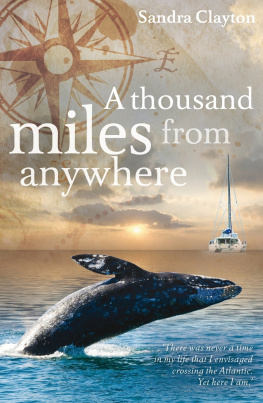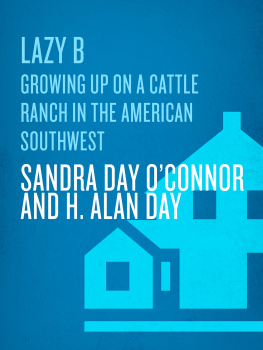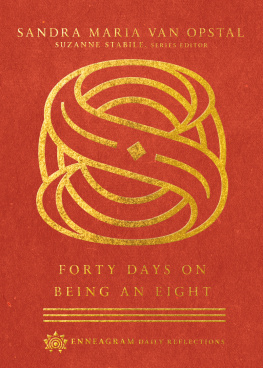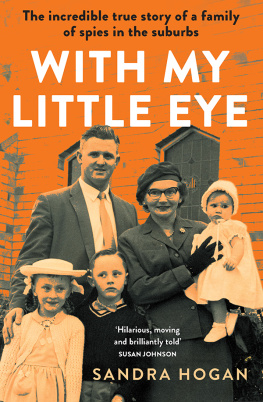Dolphins Under My Bed
ISBN 978-1-4081-3288-3
At a time when their contemporaries already had one eye focused on their pension, and conscious that age or ill health could prevent them sailing away to warmer climes, Sandra and David Clayton left the world of work behind to grasp their dream. Dolphins Under My Bed is Sandras charming account of the first stage of a journey that will become the adventure of a lifetime.
A sticky book. I couldnt put it down
Cruising Magazine
I cant emphasize enough how well Clayton writes although there are no photos, her prose is so vivid that the reader is left with indelible images
Living Aboard
A most charming read
The Lifeboat
Published by Adlard Coles Nautical
an imprint of Bloomsbury Publishing Plc
50 Bedford Square, London WC1B 3DP
www.adlardcoles.com
Copyright Sandra Clayton 2011
This electronic edition published in 2011 by Bloomsbury Publishing Plc
First published by Adlard Coles Nautical in 2012
First published 2012 by
A & C Black
Bloomsbury Publishing Plc
50 Bedford Square, London, WC1B 3DP
www.acblack.com
All rights reserved You may not copy, distribute, transmit, reproduce or otherwise make available this publication (or any part of it) in any form, or by any means (including without limitation electronic, digital, optical, mechanical, photocopying, printing, recording or otherwise), without the prior written permission of the publisher. Any person who does any unauthorised act in relation to this publication may be liable to criminal prosecution and civil claims for damages
The right of the author to be identified as the author of this work has been asserted by her in accordance with the Copyright, Designs and Patents Act, 1988.
A CIP catalogue record for this book is available from the British Library.
eISBN 9781408159361
Note: while all reasonable care has been taken in the publication of this book, the publisher takes no responsibility for the use of the methods or products described in the book.
Visit www.acblack.com to find out more about our authors and their books You will find extracts, author interviews, author events and you can sign up for newsletters to be the first to hear about our latest releases and special offers
Contents


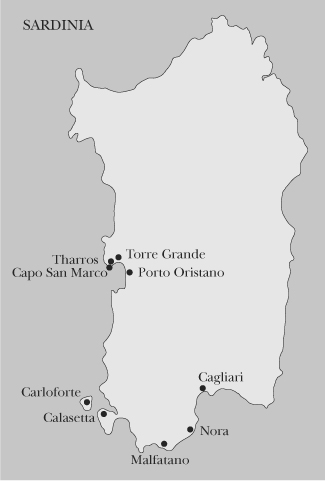
In Britain and much of Europe, wind and vessel speeds are described in knots. One knot equals a nautical mile covered in one hour, and is roughly equivalent to 1.15mph.
Also used is the Beaufort Wind Force Scale. This was created in 1805 by Sir Francis Beaufort, a British naval officer and hydrographer, before instruments were available and has since been adapted for non-naval use. When accurate wind measuring instruments became available it was decided to retain the scale and this accounts for the idiosyncratic speeds, eg Force 5 is 1721 knots, not 1520 as one might expect. Under numbered headings representing wind force, this scale also provides the sea conditions typically associated with them, although these can be affected by the direction from which the wind is coming.
The scale is reproduced on the opposite page.

Offshore yachtsmen rely on information provided by the people who have gone before them and the organisations which make their knowledge, and other vital data, available. It is those who produce the charts and cruising guides, the weather forecasts and detailed advice to whom we are all indebted and who enable us to reach our destinations in safety. Among those to whom Voyagers crew would like to express its gratitude are:
Admiralty Charts
Cruising Association
Imray Cruising Guides and Charts
Monaco Radio
Radio France Internationale
Reeds Nautical Almanac
Royal Yachting Association
The Atlantic Crossing Guide
published by Adlard Coles Nautical,
its 6th edition revised and
updated by Jane Russell
World Cruising Routes by Jimmy Cornell,
published by Adlard Coles Nautical,
6th edition
Voyager is a heavy cruising catamaran that was built by Solaris Yachts at Southampton. They built strong, comfortable boats but ceased trading after a disastrous fire spread from a neighbouring yard. Voyager is their Sunstream model, 40 ft long by 16 ft wide with twin 27hp diesel engines.
She is a typical British catamaran in that she has a small mainsail and a large genoa which is her main source of power. She is cutter rigged and therefore has a small staysail.
Her two hulls are connected by a bridge deck with a cabin on it which provides the main living area, or saloon. It contains a large sofa, a coffee table, a dining table and a chart table. Opposite the chart table, and overlooking the galley, the starboard dining seating quickly converts to a breakfast bar which also makes an ideal dining area for any meal on a bouncy sea as there is less potential for loose objects to move about.
From the saloon, you enter the starboard or right-hand hull down three steps. Immediately in front of you is the galley. Turn right and there is an additional food preparation area, storage for cutlery and crockery and a large chest freezer. In the stern is a double bunk, a wardrobe, dressing table and clothing cupboards. Underneath the bunk is one of Voyagers engines. At the bow end of this hull there is a head containing a toilet, wash basin and a bath.
The port hull contains in its stern an identical suite to the one in the starboard hull plus a shower, toilet and vanity. There is a further cabin in the bow of this hull but for the voyage we converted it into a storage space with a small workbench and vice.
Out on deck Voyager has a deep, well protected cockpit and all her sails can be handled from within it.
Life, somebody once said, is not a rehearsal.
The more this saying was repeated over the years, the more irritating I found it. But I think there must come a point where you reach the same stage in life as the person who originally coined it, because David started buying yachting magazines.
Those who know about mid-life crises will tell you that, in a long-term relationship, a fundamental indicator that a man has a new love in his life is when he suddenly begins buying himself new underwear. So I entirely failed to recognise the importance of yachting magazines in regard to my own future. I just fancied living somewhere a bit warmer and less stressful. Like Cornwall.
To cut a long story short, the year prior to the events in this book we had embarked on a new life on a 40-foot catamaran called Voyager as told in my previous book, Dolphins Under My Bed. As unseasoned sailors, the short-term plan had been to head for the Mediterranean and see how we got on. If all went well, the long-term plan was to cruise the Caribbean. By November we had reached Menorca in the Balearic Islands and settled
Next page

